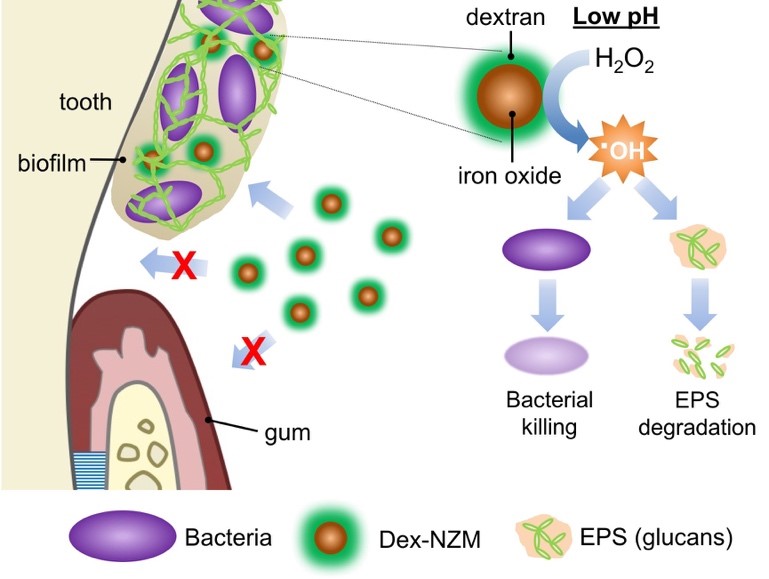Archived Featured Faculty: David Cormode
David P. Cormode, D.Phil
Associate Professor
Radiology Department
Perelman School of Medicine
University of Pennsylvania
Email: david.cormode@uphs.upenn.edu
David P. Cormode, D.Phil., completed his undergraduate and graduate studies in the Chemistry Department of the University of Oxford, where his doctoral studies involved the synthesis of multifunctional nanoparticles. He was a postdoctoral fellow at Mount Sinai School of Medicine from 2006-2012, working with Prof. Zahi Fayad and Willem Mulder. There he developed a variety of nanoparticle platforms as contrast agents for MRI, CT and fluorescence imaging, as well as delivery of therapeutics. In the summer of 2012, Dr. Cormode joined the faculty of the Radiology Department of the University of Pennsylvania, Perelman School of Medicine, where he oversees the activities of the Nanomedicine and Molecular Imaging Laboratory.
Dr. Cormode is known for nanoparticle contrast agents for improved diagnoses, and current research areas include methods for early detection of cardiovascular disease and breast cancer. He collaborates with medical physicists, radiologists, cardiologists and oncologists. Past work pioneered the development of a new form of imaging called spectral computed tomography, which is now entering clinical use. Areas of health impacted by his work include cardiovascular imaging and treatment. Dr. Cormode is a co-author of several patents, and co-founder of PolyAurum, a company commercializing gold nanoparticles for medical applications.
Some of the areas of focus of the Cormode lab are highlighted below:
Contrast agents for multi-energy X-ray imaging techniques

While X-rays are the basis of the oldest medical imaging techniques, they are still highly relevant today, with the majority of medical imaging done in the world using X-rays. Moreover, we are in a period of rapid innovation in X-ray imaging technology. One of the major innovations is a shift towards the use of multiple X-ray energies in the same scan, as opposed to using only one X-ray beam. These new imaging methodologies dictate the use of new types of materials as contrast agents. One of our projects in this area focuses on the development of contrast agents based on silver and other elements for dual energy mammography, an approach that seeks to yield more accurate detection of breast cancer. The challenge is to develop safe, low-cost agents that are rapidly cleared. Another technology that we are working with is photon counting CT, a form of CT where the energy of each photon detected is measured. This technique allows contrast agents to be specifically imaged, as can be seen in the images above, where gold nanoparticles were injected. Ongoing work involves the expansion of photon counting CT to new applications such as cell tracking and enhancing the sensitivity of this technique.
Hsu, Jessica, C.; Naha, Pratap C.; Lau, Kristen C.; Chhour, Peter; Hastings, Renee; Moon, Brianna F.; Stein, Joel M.; Witschey, Walter R.; MacDonald, Elizabeth S.; Maidment, Andrew D. A.; Cormode, David P. An all-in-one nanoparticle (AION) contrast agent for breast cancer screening with DEM-CT-MRI-NIRF imaging. Nanoscale, 2018, 10, 17236 - 17248.
Naha, Pratap C.; Lau, Kristen C.; Hsu, Jessica, C.; Hajfathalian, Maryam; Mian, Shaameen; Chhour, Peter; Uppulari, Lahari; MacDonald, Elizabeth S.; Maidment, Andrew D. A.; Cormode, David P. Gold silver alloy nanoparticles (GSAN): an imaging probe for breast cancer screening with dual-energy mammography or computed tomography. Nanoscale, 2016, 8, 13740–13754.
Cormode, David P.; Si-Mohamed, Salim; Bar-Ness, Daniel; Sigovan, Monica; Naha, Pratap C.; Balegamire, Joelle; Lavenne, Franck; Coulon, Philippe; Roessl, Ewald; Bartels, Matthias; Rokni, Michal; Blevis, Ira; Boussel, Loic; Douek, Philippe. Multicolor spectral photon-counting computed tomography: in vivo dual contrast imaging with a high count rate scanner. Scientific Reports, 2017, 7, 4784.
Kim, Johoon; Bar-Ness, Daniel; Si-Mohamed, Salim; Coulon, Philippe; Blevis, Ira; Douek, Philippe; Cormode, David P.; Assessment of candidate elements for development of spectral photon-counting CT specific contrast agents. Scientific Reports, 2018, 12119.
Biodegradable inorganic nanoparticles

One of the key challenges for the clinical translation of any agent is excretion. Elemental gold nanoparticle, for example, cannot be degraded under biological conditions, and are challenging to excrete if over ~5 nm. Therefore, they must be carefully designed to achieve excretion and have potential for eventual clinical application. We have approached this issue in different ways. For example, in the example shown in the figure above, sub-5 nm gold cores were encapsulated in a biodegradable polymer to form a larger nanoparticle. In biological fluids these nanoparticles can degrade for release of the smaller gold cores, as shown in the electron micrographs and the graph. Currently, we are expanding these concepts to nanoparticles made from other elements and seeking to develop a range of methods with which to control the rates of degradation of these nanoparticles.
Cheheltani, Rabee; Ezzibdeh, Rami M.; Chhour, Peter; Chandrika, Kumudini; Kim, Johoon; Jurcova, Martina; Hsu, Jessica C.; Blundell, Cassidy; Litt, Harold I.; Ferrari, Victor A.; Allcock, Harry A.; Sehgal, Chandra M.; Cormode, David P. Tunable, biodegradable gold nanoparticles as contrast agents for computed tomography and photoacoustic imaging. Biomaterials, 2016, 102, 87-97.
Naha, Pratap C.; Al-Zaki, Ajlan; Hecht, Elizabeth; Chorny, Michael; Chhour, Peter; Blankemeyer, Erik; Yates, Douglas M.; Witschey, Walter W. T.; Litt, Harold I.; Tsourkas, Andrew; Cormode, David P. Dextran coated bismuth-iron oxide nanohybrid contrast agents for computed tomography and magnetic resonance imaging. Journal of Materials Chemistry B, 2014, 2, 46, 8239-8248.
Brown, Anna L.; Naha, Pratap C.; Litt, Harold I.; Goforth, Andrea M. Cormode, David P. Synthesis, x-ray opacity, and biological compatibility of ultra-high payload elemental bismuth nanoparticle x-ray contrast agents. Chemistry of Materials, 2014, 26, 2266-2274.
Chhour, Peter; Gallo, Nicolas; Cheheltani, Rabe’e; Williams, Dewight; Al-Zaki, Ajlan; Nichol, Jessica L.; Tian, Zhicheng; Paik, Taejong; Naha, Pratap C.; Witschey, Walter W. T.; Allcock, Harry R.; Murray, Chris B.; Tsourkas, Andrew; Cormode, David P. Nano-disco balls: Control over surface versus core loading of diagnostically active nanocrystals into polymer nanoparticles. ACS Nano, 2014, 8, 9, 9143-9153.
Catalytic nanoparticles as anti-biofilm agents

While, in general, nanoparticles have been extensively investigated for their medical applications, there are comparatively few studies that have focused on the catalytic properties of nanoparticles in this area. We have recently found that the peroxidase-like activity of iron oxide nanoparticles can be exploited to eradicate pathogenic biofilms. These iron oxide nanoparticles can penetrate into and be retained within the biofilm. Their peroxidase activity is elevated at the low pHs found within cariogenic biofilms, resulting in selectivity. Moreover, we have found that an FDA-approved iron oxide nanoparticle (ferumoxytol) to possess the afore-mentioned properties, which has led to clinical trials of the approach. Meanwhile, we are investigating improvements to this approach, such as combination therapies and dual catalyst agents.
Naha, Pratap C.; Liu, Yuan; Hwang, Geelsu; Huang, Yue; Gubara, Sarah; Jonnakuti, Venkata; Simon-Soro, Aurea; Kim, Dongyeop; Gao, Lizeng; Koo, Hyun.; Cormode, David P. Dextran coated iron oxide nanoparticles as biomimetic catalysts for localized and pH-activated biofilm disruption. ACS Nano, 2019, online.
Liu, Yuan; Naha, Pratap C.; Hwang, Geelsu; Kim, Dongyeop; Huang, Yue; Simon-Soro, Aurea; Jung, Hoi-In; Ren, Zhi; Li, Yong; Gubara, Sarah; Alawi, Faizan; Zero, Domenick; Hara, Anderson T.; Cormode, David P.; Koo, Hyun. Topical ferumoxytol nanoparticles disrupt biofilms and prevent tooth decay in vivo via intrinsic catalytic activity. Nature Communications, 2018, 9, 2920.
Gao, Lizeng; Liu, Yuan; Kim, Dongyeop; Li, Yong; Naha, Pratap C.; Cormode, David P.; Koo, Hyun. Nanocatalysts promote Streptococcus mutans biofilm matrix degradation and enhance bacterial killing to suppress dental caries in vivo. Biomaterials, 2016, 101, 272-284.
Cormode, David P.; Gao, Lizeng; Koo, Hyun. Emerging biomedical applications of enzyme-like catalytic nanomaterials. Trends in Biotechnology, 2018, 36, 1, 15-29.


